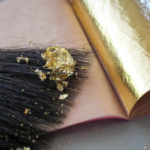Along with Phragmites australis, the duo Typha angustifolia and Typha latifolia look great in large bodies of water. Both types of typha are beautiful background plants, especially spectacular at the time of fruiting their cylindrical dark brown ears.
Botanical reference
Typha is a perennial herbaceous rhizomatous plant of the rose family, with an erect, cylindrical stem, up to 3 m (9.8 feet) or more in height. The leaves are very long, linear, and flat. The flowers are bisexual, collected in cylindrical velvety inflorescences-cobs, brown or brown-black; they bloom in June-August. Fruits-nuts with flying long hairs; ripen in August-September. Most valuable: Typha angustifolia with narrower leaves and an intermittent cob, Typha latifolia with a height of 100-200 cm (3.3-6.6 feet), leaves are broadly linear, its form ‘Variegata’ is 90-120 cm (2.9-3.9 feet) high, leaves with long cream stripes; more rare: Typha minima 30-75 cm (1-2.5 feet) tall, light brown cob.

Application
Cattail-a wild and cultivated food-is a very ornamental plant. The food used is rhizomes, young shoots (cooked as asparagus, salads, fried fish and meat dishes, pickled). For medicinal purposes, use rhizomes (for dysentery), leaves (wound healing, hemostatic agent). Stems and leaves are used for making wicker products (baskets, mats, mats, ropes), female inflorescences are suitable for dry bouquets.
Typhs are recommended for creating spectacular thickets in large reservoirs, and in small reservoirs they are planted in small groups or singly, the minimum planting depth is 7-12 cm (2.7-4.7 inches). Distribution control is required. Thus, it is necessary to remove the excess rhizomes to prevent escalation.


















